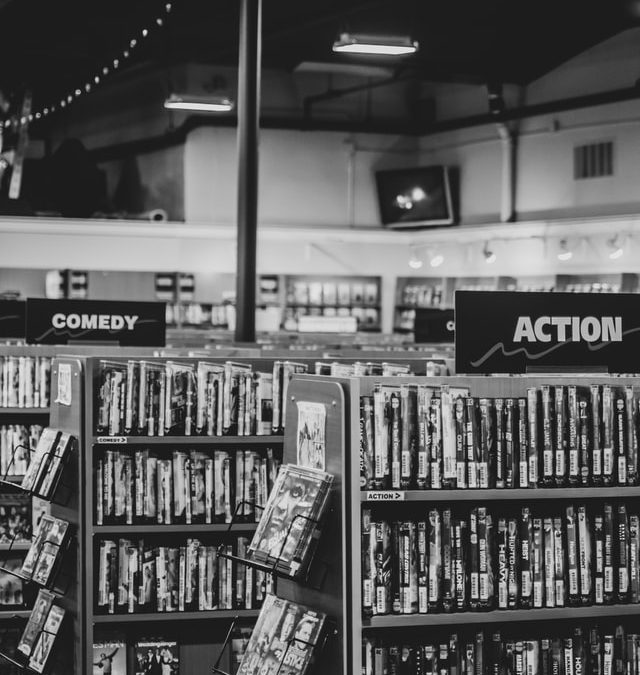Sitting around the campfire, the older generation will tell the younger of days past.
“Once, when you wanted to watch TV, you turned to a channel and could only watch what was on.”
“But, what if you wanted to binge watch?”
“Maybe you would luck out and there would be a marathon. There were also commercials. If you didn’t have cable, you needed an antennae.”
“What is that? What is network TV? How did you live?”
Oh, how the world has changed. What was a staple of my childhood—and that of previous generations—has now vanished. The local video store, with a cheap weekday rental, paying through the nose for new releases, video games, and buying used dvds and videos for cheap has become as rare as hen’s teeth. It went with being able to record your favorite show with your VCR using a blank tape you bought at the grocery store.
The local video store was a place for couples counseling. If a couple can compromise on what movie to rent that weekend, they know how to have a harmonious relationship. It was a place to shred assumptions, as the goth kid picked up the unicorn cartoon or bookworm got an action flick. A long ago day when TV shows were on video, you might find two to four episodes on one tape. Getting a season was expensive and unknown.
Now with streaming services, our choices have become infinite. Therein lies the problem. When you have so many titles, its hard to browse through them. Which means relying more and more on algo rhythms to find new things for you.
In a video store, you were able to say “I feel like a comedy tonight”, walk down the comedy row, and find a movie you had never heard of before. You can ask “I wonder what is new in foreign films?” and see single digit choices. You might even venture to the person working there, and ask what they would recommend. Movies I didn’t think I would like I stumbled across, decided to give a try, and been pleasantly surprised. Sometimes going outside of what you normally like is rewarding.
Its true you can find more movies through streaming than ever before. But you have to know what you are looking for. IF searching for “Comedy” brings up 1,000 choices, that is simply too much for one person to shift through. When given too many choices, people become overloaded.
If an algo rhythm is deciding what you see it is acting as a screener. If its a good algo rhythm, maybe that’s all right. But remember they are made by people, and companies are rarely upfront about what information they use to make their formulas. Also consider the issues caused by people being shown selective content within social media. Maybe not being exposed to different types of movies doesn’t have the same consequences as misinformation, but it still means being kept to a box. How many movies would you have loved if you saw them but never knew they existed because they didn’t get enough views, or the streaming service algo rhythm didn’t think you would like it? Algo rhythms require extensive tracking to be effective, which is something we are just becoming aware of.
True, in those days of physically needing a copy of the movie to watch it when it wasn’t being played on TV, there was plenty of screening going on. Streaming does allow niche entertainment to be profitable. Plenty of good movies never become popular, and plenty of terrible moves are seen by everyone, which is truly a shame. But I would say that is still the case now.
But in the small neighborhood video store, you had a chance to find a gem you may have never looked twice it if it showed up in streaming service. Yes, I have nostalgia, but it is good to remember the positive parts of days gone by.

